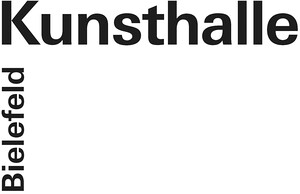Bilder vom Maler
(Paintings by a Painter)
March 19–July 3, 2016
Artur-Ladebeck-Straße 5
33602 Bielefeld
Germany
Hours: Tuesday–Sunday 11am–6pm,
Wednesday 11am–9pm,
Saturday 10am–6pm
T +49 521 329995017
info@kunsthalle-bielefeld.de
With large paintings and prints from the estate, as well as a selection of terracotta sculptures and the sculpture Hoffnungsträger, the Kunsthalle Bielefeld presents the work of Swiss artist Martin Disler.
Martin Disler was born on March 1, 1949, in Seewen in the canton of Solothurn, Switzerland, and died in 1996 at the age of just 46. Starting as a self-taught author and artist, he became a celebrated star on the national and international art scene after 1980 and was also successful in the art market. One reason for his success was doubtless the worldwide boom in the strongly subjective art labeled “Neue Wilde,” “Transavanguardia,” and ”Figuration libre,” although Disler never felt as if he belonged to these contexts. His national and international breakthrough came with the exhibition Invasion durch eine falsche Sprache at the Kunsthalle Basel in 1980. He describes his experiences before and after this exhibition in his book, Bilder vom Maler (Paintings by a painter), the supposedly authentic confessions of a contemporary artist, which was so popular that it was reprinted twice within the first three years of its release. The exhibition’s title, Martin Disler. Bilder vom Maler (Martin Disler. Images of the Painter), is a reference to this text, written in 1980.
The show presents works from various phases of Disler’s career. Some of them were also shown in the famous exhibition, Invasion durch eine falsche Sprache, such as the two drawings Mamma Grottino (1979). Disler’s early paintings are large canvases with rapidly applied acrylics and clearly recognizable motifs, the free combinations of which are surprising. Strong colors and sprawling surfaces dominate Disler’s paintings from this period. The succinct motifs and manner of painting heighten their already forceful, captivating immediacy. In terms of painting, Disler’s later paintings are more ambitious and it becomes more difficult to recognize figurative motifs, even though Disler never entirely gave up figuration. Besides their size, the paintings’ extraordinary dynamics and power also stem from Disler’s process of painting; here, he made use of brushes, as well as his hands and fingers, to apply the paint—only to scrape it off again with a knife, comparable to working on a sculpture. Disler felt out his paintings, shaping them very physically, in a process of continuous condensation.
In the early 1980s Disler turned to printmaking, but carried on working with extremely large formats. He intensively studied the various techniques and challenges of the printmaking process.
Besides paintings and prints he also produced an extensive body of three-dimensional work from the mid-1980s onward. For Disler, the sculptures were consistent with his processes of painting, drawing, and printmaking. The terracotta sculptures in the show feature a series of flat, hanging masks or skulls, along with completely sculptural objects with several heads. These recall both human and animal heads, which grow, intertwined, out of the same ground. Massive hollows remind one of large flower containers.
In the novel Bilder vom Maler, Martin Disler chronicles the artist’s life in a language that reflects exhaustion and excess. He describes his complete devotion to living the life of an “artist,” as well as his passion for art and his belief in its social relevance. His radical egocentricity found expression in his will to establish his body as a creative entity. By doing things such as dancing for hours, he brought himself to a kind of trance state, and created works whose connection to his own subconscious was supposed to make direct communication with the observer possible. Unlike the paintings by the ”Neuen Wilden,” his works lacked any sort of irony or conscious provocation. He produced painful images of the human condition without any kind of ironic distance. Nevertheless, his strong expressiveness, which went to the limits of self-control, as well as his instinct for drama required conscious decision.
The exhibition is sponsored by the Swiss cultural foundation Pro Helvetia and the Kulturstiftung pro Bielefeld.


